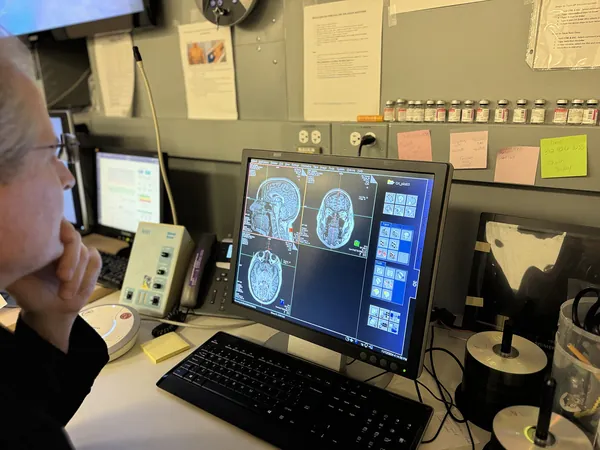
Groundbreaking Brain Study Reveals Secrets Behind Social Interaction and Mental Health
2024-12-05
Author: Arjun
In an exciting new development, researchers at Northwestern Medicine have unveiled crucial insights into how our brains communicate during social interactions—a revelation that may pave the way for innovative treatments for anxiety and depression.
We’ve all experienced that moment of doubt after social gatherings. Questions flood our minds like, “Did I say something embarrassing?” or “Did they enjoy my company?” This emotional turmoil can be overwhelming, but understanding the underlying brain mechanisms may ultimately provide new tools for addressing these issues.
In a study published in Science Advances, senior author Rodrigo Braga, PhD, and his team explored the intricate workings of our brain when it comes to deciphering the thoughts and feelings of others. Their investigation highlights that our capacity for social reasoning is tied to regions in the brain that have evolved fairly recently—indicating that this capability is a recent development in human evolution.
Central to these findings is the ‘social cognitive network’—the advanced brain regions responsible for social interactions—which communicates incessantly with the amygdala, a much older part of our brain. Often known as the “lizard brain,” the amygdala plays a vital role in processing fear, yet it also governs numerous social behaviors, such as parenting, mating, and established social hierarchies.
"Our research unveiled that the amygdala continuously interacts with the newer social cognitive network, enhancing our emotional responses during social situations,” Braga explained. This ongoing communication may explain our sometimes exaggerated responses to perceived social cues.
Notably, the researchers used functional magnetic resonance imaging (fMRI) to identify intricate neural connections that were previously unobservable. The high-resolution brain scans allowed them to pinpoint specific links between the medial nucleus of the amygdala—a neural structure critical for social behaviors—and regions of the brain associated with social cognition. Co-author Donnisa Edmonds, a neuroscience PhD candidate, emphasized how groundbreaking this data is: "We were able to uncover network regions that had previously been overlooked.”
One significant implication of this research is its potential influence on treating mental health conditions. Both anxiety and depression are associated with heightened activity in the amygdala, leading to severe emotional disturbances. Currently, invasive procedures like deep brain stimulation are used to address these issues. However, with the newfound understanding of the brain’s connectivity, the team suggests that less invasive techniques such as transcranial magnetic stimulation (TMS) may target the amygdala through its connected regions.
"This approach could fundamentally change how we treat anxiety and depression, allowing for non-invasive interventions that were previously thought impossible,” Edmonds noted.
The study, titled “The human social cognitive network contains multiple regions within the amygdala,” showcases significant interdisciplinary collaboration. It involved co-authors from various backgrounds and institutions, all united in the pursuit of advancing our understanding of the human brain and its complexities.
As research continues to unfold, it’s increasingly clear that engaging with our social environments is not just an innate talent; it’s deeply rooted in our biology. The implications of this study could transform our approach to mental health care, fostering a new era of treatment that harnesses the brain's natural social architecture to our advantage.
Stay tuned as we follow the developments of this ongoing research that promises to alter the landscape of mental health treatment forever!



 Brasil (PT)
Brasil (PT)
 Canada (EN)
Canada (EN)
 Chile (ES)
Chile (ES)
 España (ES)
España (ES)
 France (FR)
France (FR)
 Hong Kong (EN)
Hong Kong (EN)
 Italia (IT)
Italia (IT)
 日本 (JA)
日本 (JA)
 Magyarország (HU)
Magyarország (HU)
 Norge (NO)
Norge (NO)
 Polska (PL)
Polska (PL)
 Schweiz (DE)
Schweiz (DE)
 Singapore (EN)
Singapore (EN)
 Sverige (SV)
Sverige (SV)
 Suomi (FI)
Suomi (FI)
 Türkiye (TR)
Türkiye (TR)